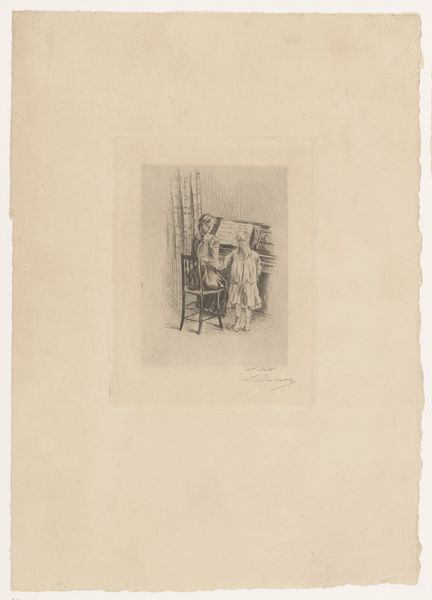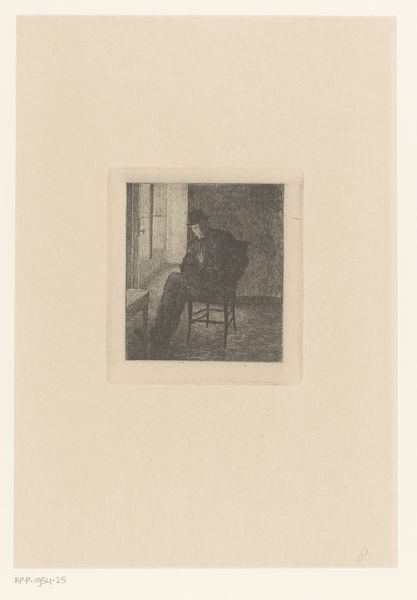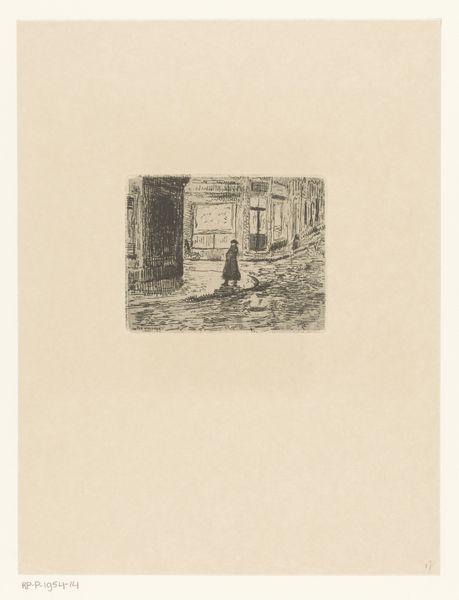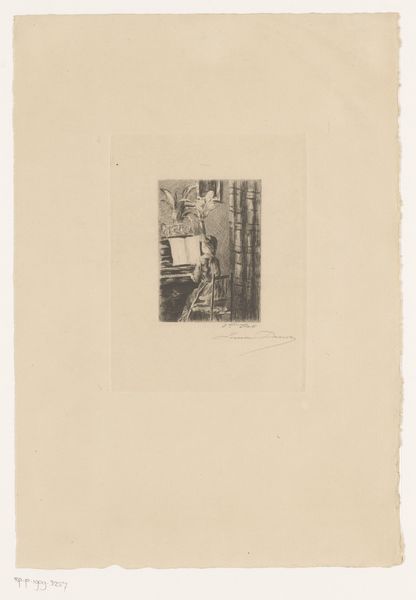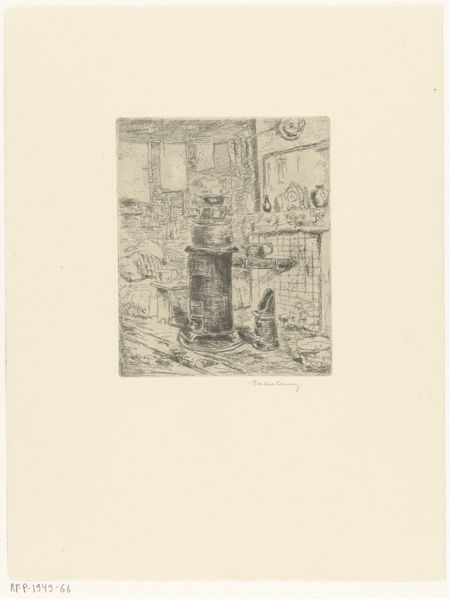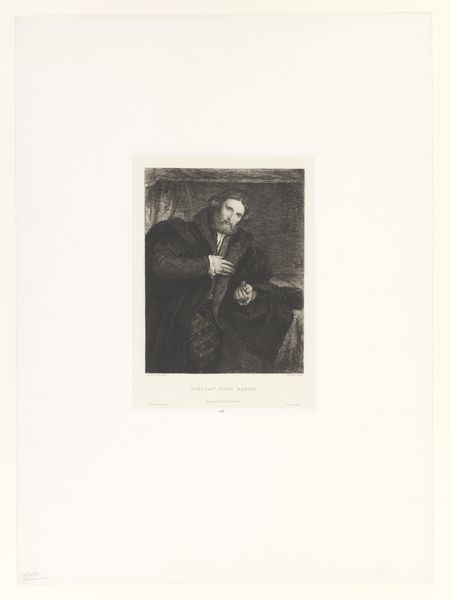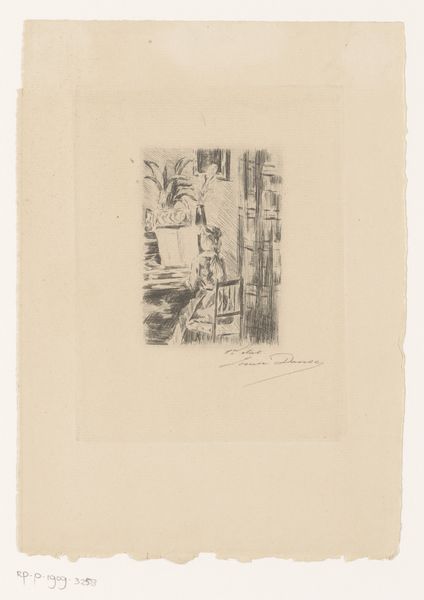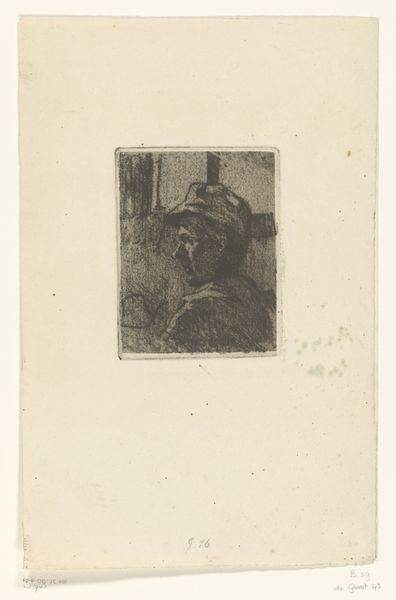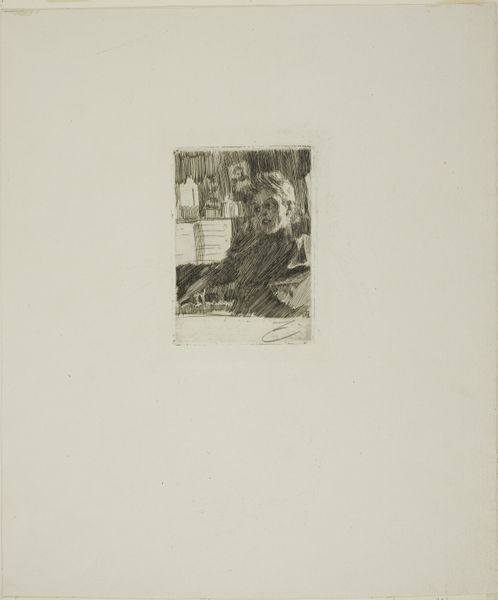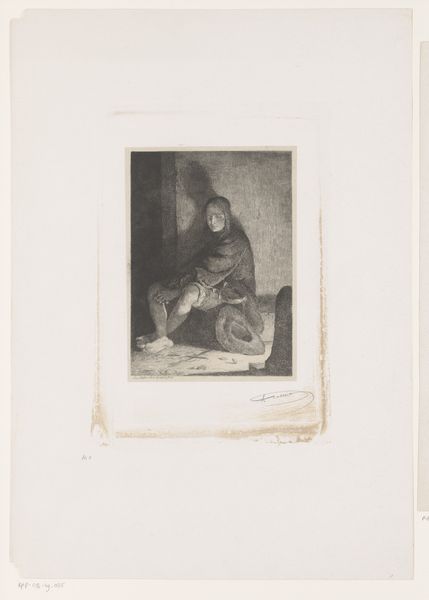
drawing, print, etching, intaglio, paper, pencil
#
portrait
#
pencil drawn
#
drawing
#
light pencil work
# print
#
etching
#
intaglio
#
pencil sketch
#
german-expressionism
#
figuration
#
paper
#
pencil
#
expressionism
#
genre-painting
Dimensions: height 276 mm, width 145 mm
Copyright: Rijks Museum: Open Domain
Editor: This is "Moeder bij een wieg met kind" or "Mother at a Cradle" by Kathe Kollwitz, created before 1903, an etching on paper. There's such a raw, emotional quality to it, almost like a captured moment of quiet desperation. How do you interpret this work? Curator: It's a powerful piece, isn't it? Kollwitz was deeply invested in depicting the struggles of the working class, and motherhood was a recurring theme. Considering the time period, and Kollwitz’s own background, can you imagine what pressures this mother might be facing? It's not just about the universal love for a child; it speaks to societal issues of poverty, access to resources, and the burdens placed disproportionately on women, especially during that era. Editor: I hadn't really thought about the wider social context, only the emotion, it feels very immediate and personal. Curator: Exactly, but the personal IS political, as some would say! Look at the mother’s posture, the rough strokes, and the cramped space. It isn't romanticized; it presents a reality faced by many. What statement do you think Kollwitz was making by stripping away any idealized view of motherhood? Editor: Perhaps, by not glorifying it, she forces us to confront the hardships and challenges. So it is about making people think? Curator: Precisely. Kollwitz uses her art as a social commentary, to incite empathy and, hopefully, action. Seeing art as a vehicle for change—what do you take away from that idea? Editor: I realize I need to consider the historical moment, to understand not only the work, but the message embedded in it. Curator: Absolutely, and the potential for art to be more than just aesthetically pleasing—to be a catalyst for change and create discussion. Editor: I agree. Considering the artwork from the point of view of societal issues has expanded my interpretation. Thanks for this point of view.
Comments
No comments
Be the first to comment and join the conversation on the ultimate creative platform.
